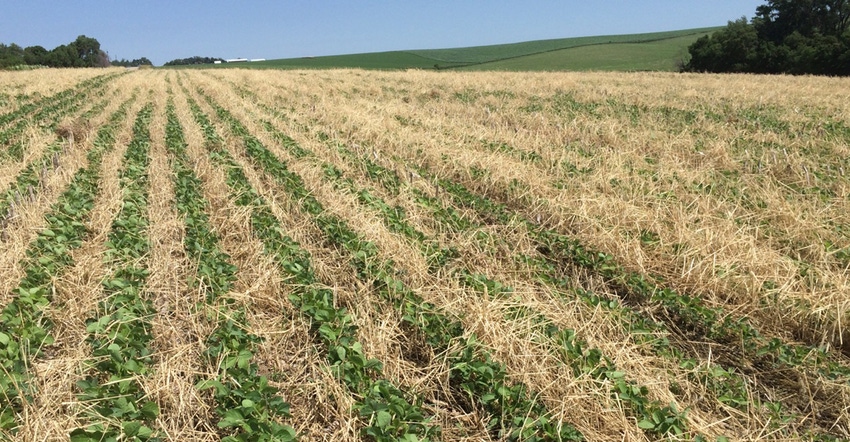March 1, 2019

Building soil health is a key strategy for improving Iowa’s water quality, according to a fact sheet put together by the Center for Rural Affairs. Soil Health in Iowa analyzes the impact healthy soils have on water quality, weather resiliency and farm productivity in Iowa.
The publication shows how conservation practices, including grazing cover crops, can improve soil health and quality. Through better soil infiltration and absorption capacity, conservation practices create on-farm value for the state’s producers. These changes can also improve water quality by keeping nutrients on the farm fields where they were applied.
Healthy soils more profitable
“Better resilience during extreme weather events and a lower need for inputs like fertilizer are just a few of the benefits farmers see when they invest in soil health,” says Katie Rock, policy associate at the center. “The evidence is clear: Healthy soils result in long-term gains in productivity and financial stability of farms across Iowa.”
Policies supporting soil health will play a key role in meeting the goals of the Iowa Nutrient Reduction Strategy, which aims to reduce the amount of nitrogen and phosphorus in the state’s waterways by 45%.
“As we encourage practices that can rebuild topsoil, farmers and their downstream neighbors will continue to see financial and recreational improvements,” Rock says. “Several studies of farmers in the Upper Mississippi River Basin document cost savings of $100 per acre after they invested in soil health practices.”
Cleaner water with cover crops
Cover crops significantly reduced nutrient runoff in crop fields in 2018, according to tile drainage water monitoring results compiled by the Iowa Soybean Association. Statewide, average drainage water nitrate concentrations were 23% lower in fields with cover crops compared to fields without cover crops.
“We’re seeing significantly less nitrate concentration and less loading in cover crop fields,” says Tony Seeman, ISA environmental research coordinator. “Without cover crops, we see a wide range of concentrations coming out of the tile lines. Where there are cover crops, the concentration of nitrate coming out of the tile is more even. Those cover crops are working year-round.”
ISA researchers collected and analyzed 4,000 water samples from 613 locations across Iowa, including 335 tile drainage outlets. They also analyzed water samples from rivers, streams and conservation structures such as bioreactors, saturated buffers, ponds and wetlands.
Most effective practices
The data didn’t show a strong correlation between nitrogen fertilizer application rates and the concentration in tile water. “The idea that if you just reduce your application rate by 20 pounds per acre that you will see a difference in nitrate concentrations in tile water just isn’t happening,” Seeman says. “You really need to look at your field and what’s going on before just applying a lower nitrogen rate per acre.”
Timing of N application didn’t seem to influence nitrate concentrations either. “Fall or spring, it didn’t really make a huge difference,” Seeman says. “We really don’t see this being a major driver that we need to move away from fall applications, or we need to move to in-season nitrogen application. That’s not what our data is showing.”
ISA research shows it’s more important to identify the most effective practices for a particular field and landscape, rather than rely on a one-size-fits-all approach. For example, he says a bioreactor in a field in Pocahontas County in northwest Iowa showed a 50% to 60% reduction in nitrate concentrations. In other situations, saturated buffers or wetlands have proven more effective. “The data we’ve collected can help us manage these practices better,” Seeman says.
Working across small watersheds, ISA research has documented positive results over time from coordinated efforts by farmers to reduce runoff. “Farmers who are using these conservation practices to reduce runoff are moving in the right direction, as they are also reducing nitrate concentrations in drainage water,” he says.
About the Author(s)
You May Also Like






